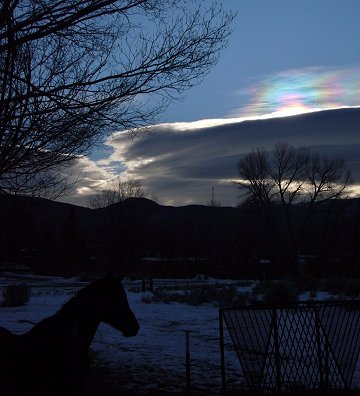 Did you sleep through the auroras of Dec. 14th? Next time get a wake-up call: Spaceweather PHONE.
Did you sleep through the auroras of Dec. 14th? Next time get a wake-up call: Spaceweather PHONE.
SOLAR IMAX: Set your browser to full screen. Gary Palmer of Los Angeles has assembled some of the most photogenic solar flares of 2006. "These IMAX-style movies are designed to be experienced full screen and beyond..." he says. Click here for action!
AROUND THE CORNER: Sunspot 930, which caused so many beautiful auroras in mid-December, is due to return this weekend. Tall magnetic loops now visible on the sun's eastern horizon herald its arrival:

Image Credit: SOHO Extreme UV Telescope. Dec. 29, 2006.
The sunspot was last seen on Dec. 17th disappearing over the sun's western limb. The sun spins on its axis every 27 days, and that is why sunspot 930 will soon reappear--on the eastern limb following a 2-week transit of the sun's farside.
What will sunspot 930 bring this time? Stay tuned.
DISORDERLY CORONA: When the sun rose over Taos, New Mexico, on Dec. 26th, onlookers witnessed a beautiful pastel haze announcing the sun behind the clouds. Master goldsmith and amateur photographer Phil Poirier took this picture:

What is it? The best description would be a "disorderly corona," says atmospheric optics expert Les Cowley.
"Colors in the sky like those on oily pools are a sign that tiny water drops in clouds are scattering sunlight," he explains. "We see a corona with circular rings if the drops are the same size all across the cloud. Drop sizes varying from place to place, on the other hand, make chaotic colors--iridescence. The pastel haze in Phil Poirier's picture is an 'in between' case. Call it a disordered corona! Look out for these effects when the sun is just hidden behind a cloud or even a building."

